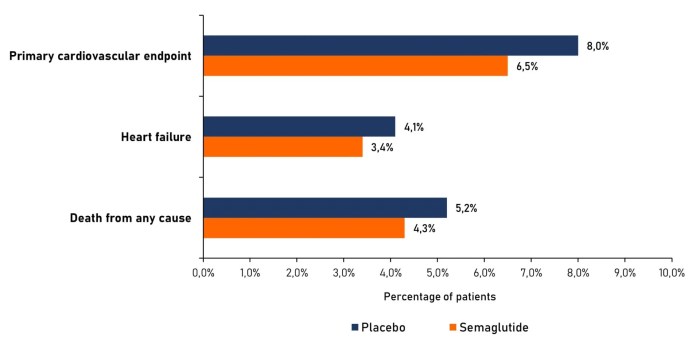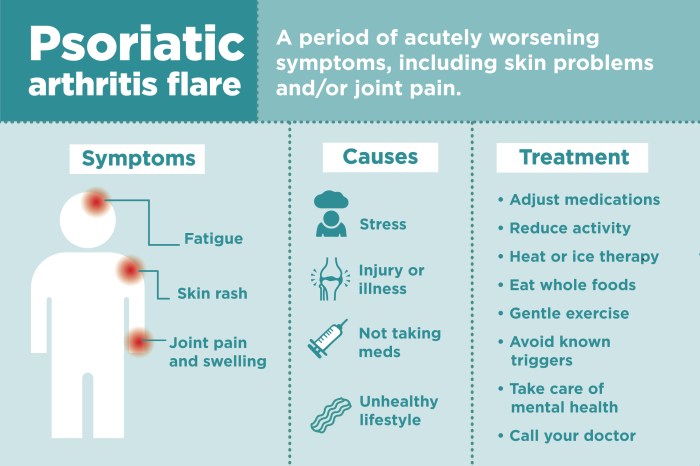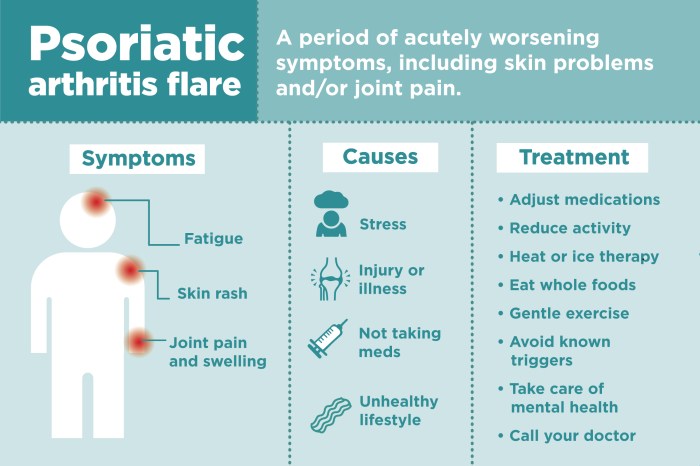Drug induced liver disease – Drug-induced liver disease (DILD) is a serious condition where medications cause liver damage, ranging from mild inflammation to severe liver failure. Understanding the complexities of DILD, from its diverse types and risk factors to effective diagnostic and treatment strategies, is crucial for healthcare professionals and patients alike. This comprehensive guide delves into the various facets of DILD, including its pathophysiology, clinical manifestations, diagnosis, management, prevention, and emerging research.
DILD can manifest in a multitude of ways, impacting individuals differently based on the specific drug, dosage, and underlying health conditions. This guide aims to provide a thorough overview, enabling readers to grasp the multifaceted nature of this condition. We’ll explore the intricate mechanisms by which drugs cause liver damage, the spectrum of symptoms, and the current approaches to diagnosis and treatment.
Furthermore, the guide will emphasize the importance of prevention and public health implications, offering strategies to reduce the risk and improve outcomes.
Introduction to Drug-Induced Liver Disease (DILD)
Drug-induced liver disease (DILD) encompasses a spectrum of liver injuries caused by medications. While many medications are safe and effective, some can trigger inflammation, damage, or even serious liver dysfunction. The complexity arises from the intricate interplay between drug metabolism, individual genetic factors, and pre-existing health conditions, making the diagnosis and management of DILD challenging. DILD is a significant public health concern, with a considerable prevalence, often under-recognized and potentially leading to chronic liver disease or even liver failure.DILD is not a singular entity but rather a collection of diverse hepatic reactions.
These reactions can be broadly categorized based on their mechanism of action, helping clinicians to understand the underlying pathophysiology and tailor appropriate treatment strategies. Different mechanisms can lead to similar symptoms, highlighting the need for careful evaluation of the patient’s medical history and drug exposure.Common risk factors for developing DILD include pre-existing liver conditions, such as hepatitis or fatty liver disease, concomitant use of multiple medications, and certain genetic predispositions.
Age, gender, and other health conditions also play a role in the susceptibility to DILD. Individuals with a history of alcohol use, those with underlying immune deficiencies, or those taking certain types of medications are more vulnerable to developing DILD.Early diagnosis and prompt intervention are critical in DILD. Early recognition of symptoms, such as jaundice, abdominal pain, or fatigue, is crucial for initiating appropriate treatment and preventing potentially severe complications.
This often involves discontinuation of the implicated medication, supportive care, and, in severe cases, liver transplantation. The prompt and accurate identification of DILD is crucial to minimize long-term liver damage.
Categorization of DILD by Mechanism
Various mechanisms contribute to the development of DILD. These mechanisms include direct hepatotoxicity, immune-mediated reactions, and idiosyncratic reactions. Direct hepatotoxicity occurs when a drug directly damages liver cells, often through metabolic processes. Immune-mediated reactions involve the body’s immune system mistakenly targeting and attacking liver cells, sometimes triggered by the drug or its metabolites. Idiosyncratic reactions are unpredictable and often poorly understood, where a drug’s effect on the liver is not directly linked to its pharmacological properties.
Common Risk Factors
Several factors can increase a person’s susceptibility to DILD. Pre-existing liver conditions, such as chronic hepatitis or non-alcoholic fatty liver disease, significantly increase the risk. Concomitant use of multiple medications, especially those metabolized by the liver, can also increase the risk. Certain genetic predispositions and underlying health conditions, including immune deficiencies and alcohol use, contribute to the development of DILD.
Additionally, age and gender may influence the susceptibility to drug-induced liver injury.
Examples of Drug-Induced Liver Disease
The following table presents five common examples of DILD, categorized by the implicated drug, the mechanism of injury, common symptoms, and available treatment options.
| Drug |
Mechanism |
Symptoms |
Treatment Options |
| Acetaminophen (Paracetamol) |
Direct hepatotoxicity, often due to overdose |
Nausea, vomiting, abdominal pain, jaundice, elevated liver enzymes |
Supportive care, potentially activated charcoal if ingested recently, and close monitoring |
| Isoniazid |
Direct hepatotoxicity |
Jaundice, fatigue, abdominal pain, elevated liver enzymes |
Discontinuation of the drug, supportive care |
| Statins |
Direct hepatotoxicity, possible immune-mediated |
Mild elevations in liver enzymes, fatigue, abdominal discomfort, in severe cases, jaundice |
Dose reduction, discontinuation of the drug if necessary, supportive care |
| Methotrexate |
Direct hepatotoxicity, immune-mediated |
Nausea, vomiting, fatigue, elevated liver enzymes, jaundice |
Dose reduction, supportive care |
| Amiodarone |
Direct hepatotoxicity, immune-mediated |
Fatigue, abdominal pain, jaundice, elevated liver enzymes, potentially fatal if severe |
Discontinuation of the drug, supportive care, potentially liver transplant |
Pathophysiology of DILD
Drug-induced liver disease (DILD) is a significant concern in clinical practice, arising from a diverse array of medications. Understanding the underlying mechanisms is crucial for early diagnosis and effective management. The liver, a vital organ responsible for detoxification and metabolism, can be susceptible to damage from certain drugs. Different drugs can induce injury through varied pathways, emphasizing the complexity of this condition.The pathophysiology of DILD is multifaceted, encompassing a spectrum of cellular and molecular processes that ultimately lead to liver damage.
These processes are often triggered by interactions between drugs and the liver’s metabolic machinery. The severity of the injury can vary significantly depending on factors like the specific drug, dosage, duration of exposure, and the individual’s genetic predisposition.
Mechanisms of Drug-Induced Liver Injury
Various mechanisms contribute to drug-induced liver injury. Direct hepatotoxicity involves the drug or its metabolites directly damaging liver cells. This can occur through a variety of means, such as reactive oxygen species generation, altering membrane integrity, or inhibiting cellular processes. Another mechanism involves immunologic responses, where the immune system mistakenly targets liver cells, potentially triggering inflammation and damage.
Genetic factors, such as polymorphisms in drug-metabolizing enzymes, play a role in determining an individual’s susceptibility to DILD.
Role of Oxidative Stress, Inflammation, and Apoptosis
Oxidative stress, characterized by an imbalance between reactive oxygen species (ROS) production and antioxidant defenses, is a critical component in many forms of DILD. ROS generated by drug metabolism or interactions with cellular components can overwhelm the antioxidant system, leading to lipid peroxidation, protein damage, and DNA mutations. Inflammation, an immune response to injury, is often a significant contributor to DILD.
Cytokine release and recruitment of immune cells can further damage liver tissue. Apoptosis, programmed cell death, can also play a role in DILD, with certain drugs triggering excessive cell death, leading to progressive liver damage.
Cellular and Molecular Pathways Involved
Drug metabolism plays a critical role in the development of DILD. Phase I metabolism, involving enzymatic reactions that modify the drug, often generates reactive intermediates. These intermediates can react with cellular components, leading to oxidative stress and subsequent injury. Phase II metabolism, which conjugates the drug metabolites, aims to render them less toxic, and disruptions in this pathway can contribute to the accumulation of harmful metabolites.
Furthermore, specific cellular targets within the liver, such as the endoplasmic reticulum, mitochondria, and cytoskeleton, can be affected by drug-induced stress.
Comparison of Different Mechanisms of DILD
| Mechanism |
Impact on Liver Cells |
Examples of Drugs |
| Direct Hepatotoxicity |
Direct damage to hepatocytes, often leading to necrosis or apoptosis. |
Acetaminophen, halothane, carbon tetrachloride |
| Immunologic Reactions |
Immune system attacks liver cells, leading to inflammation and injury. |
Certain antibiotics, anti-rheumatic drugs |
| Oxidative Stress |
ROS overwhelm antioxidant defenses, causing lipid peroxidation and cellular damage. |
Many drugs, especially those metabolized by cytochrome P450 enzymes |
Factors Influencing Drug Metabolism and its Impact on DILD
Genetic polymorphisms in drug-metabolizing enzymes (e.g., cytochrome P450s) can significantly impact drug metabolism. Individuals with certain polymorphisms may have altered enzyme activity, leading to either increased or decreased drug metabolism, and thus increased or decreased risk of DILD. Co-administration of other medications can also influence drug metabolism, potentially leading to drug interactions and increased risk of liver damage.
Individual factors such as age, nutritional status, and pre-existing liver conditions can also affect drug metabolism and susceptibility to DILD. For example, individuals with pre-existing liver conditions may be more susceptible to drug-induced liver injury.
Clinical Manifestations of DILD
Drug-induced liver disease (DILD) presents a diverse range of clinical manifestations, ranging from mild, asymptomatic elevations in liver enzymes to severe, life-threatening liver failure. Understanding these symptoms is crucial for early diagnosis and appropriate management. Recognizing the subtle signs and the more overt symptoms allows for prompt intervention, potentially saving lives and preventing long-term complications.Clinical manifestations of DILD are often nonspecific, mirroring other medical conditions.
This can make diagnosis challenging. However, a careful history, physical examination, and laboratory investigations, particularly liver function tests (LFTs), are essential for distinguishing DILD from other causes of liver dysfunction.
Common Symptoms
Early DILD often presents with no noticeable symptoms, and elevated liver enzymes are frequently the first indication of the problem. As the disease progresses, various symptoms emerge, reflecting the extent of liver damage. These can range from mild fatigue and malaise to more severe complications like jaundice and abdominal pain. Recognizing the spectrum of potential symptoms is critical for early intervention.
Diagnostic Criteria
Diagnostic criteria for DILD are multifaceted and encompass various factors. A crucial aspect is the assessment of liver function tests (LFTs). Elevated levels of liver enzymes, such as alanine aminotransferase (ALT) and aspartate aminotransferase (AST), are frequent indicators. The severity and pattern of these elevations can offer clues about the underlying etiology and extent of liver damage.
Other markers, such as bilirubin and prothrombin time, provide further insight into the disease progression.
Importance of Liver Function Tests (LFTs)
Liver function tests (LFTs) are vital in evaluating liver health and detecting DILD. These tests measure the levels of various enzymes and substances produced or processed by the liver. Elevated levels of certain enzymes, like ALT and AST, are strong indicators of liver injury. The pattern of elevation, whether predominantly ALT or AST, and the extent of elevation, can help differentiate DILD from other liver conditions.
Clinical Symptoms and Severity
| Clinical Symptom |
Potential Severity |
| Fatigue, malaise |
Mild |
| Nausea, vomiting |
Mild to Moderate |
| Anorexia |
Mild to Moderate |
| Abdominal pain |
Moderate to Severe |
| Jaundice (yellowing of skin and eyes) |
Moderate to Severe |
| Ascites (fluid buildup in the abdomen) |
Severe |
| Encephalopathy (brain dysfunction) |
Severe |
| Coagulopathy (bleeding disorders) |
Severe |
This table provides a general overview of potential symptoms and their corresponding severity levels. It is crucial to remember that the presentation can vary significantly depending on the specific drug, the dosage, and the individual’s predisposition.
Role of Imaging Studies
Imaging studies, such as ultrasound, CT scans, and MRI, play a supporting role in the diagnosis of DILD. They can help visualize the liver and identify structural abnormalities, such as masses or cirrhosis, that might be contributing to or associated with the liver damage. However, LFTs remain the primary diagnostic tool, with imaging studies providing supplementary information.
Correlation Between Symptoms and Underlying Mechanisms
The correlation between specific symptoms and underlying mechanisms in DILD is not always straightforward. For example, jaundice, a common symptom, typically arises from the accumulation of bilirubin due to impaired liver function. However, the exact interplay between drug-induced damage and specific symptoms can be complex and variable. Further research is needed to fully elucidate the intricate mechanisms behind symptom development in DILD.
Diagnosis and Management of DILD: Drug Induced Liver Disease
Drug-induced liver disease (DILD) necessitates a meticulous diagnostic and management approach to ensure timely intervention and optimal patient outcomes. Early detection and appropriate management are crucial in minimizing potential complications and improving the likelihood of full recovery. A comprehensive evaluation, incorporating a detailed medical history, physical examination, and a battery of diagnostic tests, forms the bedrock of the diagnostic process.Effective management strategies often involve supportive care measures, drug discontinuation, and potentially, specific treatments based on the underlying etiology and severity of the liver injury.
Understanding the various diagnostic tools and treatment options empowers healthcare providers to make informed decisions, optimizing patient care and outcomes.
Diagnostic Procedures for DILD
Accurate diagnosis of DILD hinges on a comprehensive evaluation, integrating patient history, physical examination findings, and a series of diagnostic tests. Blood tests play a pivotal role in assessing liver function and identifying potential liver injury. Liver biopsies are sometimes necessary to confirm the diagnosis and assess the extent of liver damage.
- Blood Tests: Liver function tests (LFTs), including aspartate aminotransferase (AST), alanine aminotransferase (ALT), bilirubin, and alkaline phosphatase, are frequently used to detect abnormalities suggestive of liver damage. Elevated levels of these enzymes often indicate liver inflammation or injury. Furthermore, a complete blood count (CBC) and other relevant blood tests can offer insights into systemic health and identify potential complications.
Drug-induced liver disease can be a serious issue, impacting your overall health. While there’s no magic bullet for treating it, focusing on a healthy lifestyle and exploring alternative remedies can help. For example, when dealing with ear infections, you might consider natural treatments like using warm compresses or herbal remedies. Many people find relief from home remedies for ear infections, like those found at home remedies ear infections.
Ultimately, though, it’s crucial to remember that these are just supplemental strategies and professional medical advice should always be sought for any health concerns, especially concerning conditions like drug-induced liver disease.
- Liver Biopsy: A liver biopsy, a procedure involving the removal of a small tissue sample from the liver, remains a crucial diagnostic tool. Histopathological examination of the biopsy sample provides valuable information regarding the extent and nature of liver injury. It helps differentiate between various types of liver disease, including DILD, and allows for a more precise diagnosis.
This procedure is often reserved for cases where blood tests or other diagnostic measures are inconclusive or when a specific diagnosis is crucial for treatment planning.
Treatment Strategies for DILD
The management of DILD emphasizes supportive care and, critically, drug discontinuation. This immediate step aims to prevent further liver damage. Specific treatments might be considered depending on the underlying cause and severity of the liver injury. A tailored approach is essential to optimize patient outcomes.
- Drug Discontinuation: The cornerstone of DILD management is immediate cessation of the suspected offending drug. This crucial step prevents further liver damage and allows the liver to begin its healing process. The speed and manner of drug cessation depend on various factors, including the half-life of the drug and the severity of the liver injury. Careful consideration must be given to the potential withdrawal symptoms that may arise from abrupt discontinuation.
- Supportive Care: Supportive care measures are vital in managing DILD, encompassing close monitoring of liver function, adequate hydration, and nutritional support. Nutritional support is particularly important to maintain energy levels and promote liver regeneration. This might involve a high-protein, low-fat diet, and, in some cases, supplementation of essential nutrients. In severe cases, hospitalization might be required for close monitoring and intensive supportive care.
- Specific Treatments: In some instances, specific treatments beyond supportive care might be necessary. These treatments are typically tailored to address the underlying cause of the liver injury. Examples include corticosteroids for certain autoimmune-related DILD cases or specific medications to address any co-occurring conditions.
Comparison of Treatment Approaches
Different treatment approaches for DILD vary in their effectiveness and limitations. Drug discontinuation is the most effective initial intervention, providing a direct mechanism for preventing further liver damage. Supportive care plays a crucial role in managing complications and facilitating the liver’s natural healing process.
| Treatment Approach |
Effectiveness |
Limitations |
| Drug Discontinuation |
Highly effective in preventing further liver damage when the offending drug is identified. |
May not be effective if the liver injury is severe or irreversible. Potential for withdrawal symptoms. |
| Supportive Care |
Crucial in managing complications, promoting liver healing, and maintaining overall well-being. |
May not be sufficient in severe cases requiring specific interventions. |
| Specific Treatments |
Can be highly effective in addressing underlying causes of liver injury. |
Availability, efficacy, and potential side effects vary depending on the specific treatment and the individual patient. |
Monitoring Liver Function, Drug induced liver disease
Continuous monitoring of liver function is essential throughout the management of DILD. This dynamic assessment allows for timely adjustments to the treatment plan and facilitates early detection of complications.
- Regular LFTs: Regular monitoring of LFTs provides crucial information about the status of liver function. Changes in LFT results can indicate the effectiveness of the treatment or the emergence of complications. Frequency of monitoring depends on the severity of the liver injury and the patient’s response to treatment.
- Clinical Assessment: Alongside LFTs, careful clinical assessment of the patient is essential. Symptoms, such as jaundice, abdominal pain, or fatigue, should be closely monitored and reported. Changes in these symptoms can be an indicator of evolving liver injury or complications.
- Prognosis: The prognosis for DILD varies considerably, depending on the severity of liver injury, the offending drug, and the timeliness and efficacy of treatment. Prompt diagnosis and intervention are critical in minimizing potential long-term complications, and in some cases, full recovery is achievable.
Prevention and Public Health Implications
Drug-induced liver disease (DILD) is a significant public health concern, impacting individuals across various demographics. Proactive prevention strategies are crucial to mitigate the burden of this condition. Effective approaches involve not only patient education but also public health initiatives that promote awareness and responsible medication use. Understanding the risk factors, coupled with targeted interventions, is key to minimizing the development of DILD.
Strategies to Reduce the Risk of Developing DILD
Effective strategies for reducing DILD risk are multifaceted and demand a comprehensive approach. Early identification of individuals at high risk and timely interventions are critical components of preventative care. This involves a thorough evaluation of patients’ medical history, including a complete medication list, to assess potential risks. Furthermore, education plays a vital role in empowering patients to make informed decisions about their health.
Importance of Medication Reconciliation and Patient Education
Medication reconciliation is an essential component in preventing DILD. A complete and accurate inventory of all medications, including prescriptions, over-the-counter drugs, and herbal supplements, is vital for identifying potential interactions and adverse effects. This process ensures that healthcare providers have a comprehensive understanding of the patient’s current medication regimen, which helps in identifying and mitigating risks associated with DILD.
Patient education is equally crucial. Patients need to be informed about potential side effects, proper medication administration, and warning signs of liver damage. Clear communication between healthcare professionals and patients is paramount in empowering patients to actively participate in their health management.
Public Health Implications of DILD
DILD poses significant public health implications. The economic burden associated with diagnosis, treatment, and long-term care of DILD is substantial. Prevention and awareness campaigns are crucial in reducing the incidence of DILD and mitigating its impact on healthcare systems and individual lives. These campaigns can target specific populations at higher risk, such as those with underlying liver conditions or those who regularly use certain medications.
Preventative Measures for DILD
| Patient Group |
Risk Factors |
Preventative Measures |
| Individuals with pre-existing liver conditions (e.g., hepatitis, fatty liver disease) |
Increased susceptibility to liver damage from medications |
Regular liver function tests, careful medication selection, adherence to prescribed dosages, and close monitoring by healthcare providers. |
| Individuals taking multiple medications (polypharmacy) |
Increased risk of drug interactions and adverse effects |
Medication reconciliation, careful assessment of drug interactions by healthcare providers, and clear communication between patients and providers. |
| Individuals using herbal remedies and supplements |
Potential for interactions with prescribed medications or underlying liver conditions |
Consultation with healthcare providers before using herbal remedies and supplements, awareness of potential interactions with prescribed medications, and adherence to recommended dosages. |
| Individuals with a history of alcohol abuse or heavy alcohol consumption |
Increased susceptibility to liver damage |
Avoiding or limiting alcohol consumption, regular liver function tests, and close monitoring by healthcare providers. |
Long-Term Consequences of DILD
The long-term consequences of DILD can be severe, impacting various aspects of an individual’s health. Cirrhosis, a severe scarring of the liver, is a potential complication. This can lead to complications like portal hypertension, ascites, and potentially liver failure. The impact on overall health is substantial, often necessitating extensive medical interventions and potentially impacting quality of life.
The development of liver cancer is also a significant long-term concern. Early diagnosis and management of DILD are essential to minimize these potential long-term consequences.
Case Studies and Examples
Diving into the realm of drug-induced liver disease (DILD) requires understanding the diverse range of culprits and their specific mechanisms of action. This section will explore specific drug examples, illustrate diagnosis and management in varied patient populations, and provide a comparative analysis of treatment outcomes. It also delves into the long-term prognosis of DILD patients, highlighting the complex challenges in managing these cases.Understanding the mechanisms behind DILD is crucial for effective treatment and prevention.
Some drugs cause direct toxicity to liver cells, while others induce an immune response that damages the liver. This variability necessitates a tailored approach to diagnosis and management, considering individual patient factors and the specific drug implicated.
Specific Drugs Associated with DILD
Various drugs can cause DILD, each with a distinct mechanism of injury. Acetaminophen, a common over-the-counter pain reliever, is a prime example. Its hepatotoxicity is dose-dependent, with high doses exceeding the liver’s capacity to metabolize it. This leads to the formation of toxic metabolites that damage hepatocytes. Statins, commonly used to lower cholesterol, can also cause DILD.
Drug-induced liver disease can be a serious concern, impacting liver health. Sometimes, the body’s reaction to medications can mimic other conditions, making diagnosis tricky. For instance, similar symptoms might arise after treating gonorrhea, like those discussed in detail in this article about gonorrhea symptoms after treatment. It’s crucial to understand these potential overlaps to ensure proper medical attention and avoid misdiagnosis when dealing with drug-induced liver disease.
They may induce an inflammatory response in the liver, potentially leading to drug-induced hepatitis. Other drugs like isoniazid, used to treat tuberculosis, can also result in DILD, often by inducing an immune response. The specific mechanism varies depending on the drug.
Case Studies
A 45-year-old woman presented with jaundice, fatigue, and abdominal pain. She had been taking a high dose of acetaminophen for a persistent headache. Elevated liver enzymes and bilirubin levels were observed. The diagnosis of acute acetaminophen-induced liver injury was confirmed. The patient was managed with supportive care, including hydration and monitoring of liver function.
A 60-year-old male taking statins for hypercholesterolemia experienced an insidious onset of fatigue and malaise. Elevated liver enzymes were detected during routine blood work. The statin was discontinued, and the patient responded favorably with a gradual improvement in liver function. These case studies highlight the importance of considering DILD in patients with elevated liver enzymes, especially when taking multiple medications.
Detailed medication history and symptom evaluation are vital to establishing a diagnosis.
Comparison of Treatment Strategies
| Treatment Strategy |
Example Drug |
Outcome (Improved/Stable/Deteriorated) |
Rationale |
| Supportive care (hydration, nutrition) |
Acetaminophen overdose |
Improved |
Focuses on mitigating the effects of the drug, allowing the liver to recover |
| Discontinuation of offending drug |
Statins |
Improved |
Removing the hepatotoxic agent is crucial for preventing further liver damage |
| Corticosteroids |
Drug-induced hepatitis |
Improved (in some cases) |
Can reduce inflammation, but use is often nuanced and specific to the underlying mechanism |
This table illustrates the varied treatment approaches for DILD, highlighting the necessity of individualized care.
Long-Term Prognosis
The long-term prognosis for DILD patients varies significantly depending on the severity of the injury, the underlying cause, and the timely and appropriate management. Some patients may experience complete recovery with no lasting effects. However, chronic DILD can lead to cirrhosis, liver failure, and an increased risk of hepatocellular carcinoma (HCC). Early diagnosis and prompt intervention are essential for improving long-term outcomes.
Drug-induced liver disease can be a serious concern, often stemming from unexpected reactions to medications. A crucial aspect of managing potential liver issues, especially in this context, involves mindful dietary choices. This includes being aware of foods high in phosphorus, as some medications can interact negatively with high phosphorus levels. For a comprehensive list of foods high in phosphorus, check out this helpful resource: foods high in phosphorus.
Ultimately, understanding these dietary considerations can help support liver health and potentially mitigate the risk of drug-induced liver disease.
Patients with chronic liver disease require ongoing monitoring and potentially liver transplantation.
Challenges in Managing DILD Cases
Diagnosing DILD can be challenging, as symptoms often overlap with other conditions. Determining the specific drug causing the liver injury can also be complex, especially in patients taking multiple medications. Individualized treatment plans are essential, but there is a lack of standardized protocols in certain cases. The variability in drug mechanisms and individual patient responses makes it difficult to predict outcomes.
The potential for long-term complications necessitates careful monitoring and management. Furthermore, timely recognition and intervention are crucial to improve the prognosis of DILD patients.
Emerging Research and Future Directions
The landscape of drug-induced liver disease (DILD) research is rapidly evolving, driven by the need for improved diagnostic tools, preventive strategies, and effective treatments. Ongoing studies are shedding light on the complex mechanisms underlying DILD, paving the way for more targeted interventions and ultimately, better patient outcomes.This exciting period of research is focused on understanding the intricate interplay of genetic predisposition, environmental factors, and drug properties in triggering DILD.
This understanding is crucial for developing personalized prevention strategies and optimizing treatment approaches.
Current Research Efforts
Researchers are actively investigating the genetic and environmental factors that contribute to individual susceptibility to DILD. Genome-wide association studies (GWAS) are helping to identify specific genetic markers associated with an increased risk of developing DILD following exposure to certain drugs. These findings can be instrumental in developing predictive models to identify individuals at high risk, allowing for preventative measures and personalized drug selection.
Environmental factors, including pre-existing liver conditions and nutritional status, are also under investigation. These studies aim to uncover the interactions between these factors and drug-induced liver injury.
Novel Therapeutic Strategies
Several novel therapeutic strategies are being explored to mitigate the effects of DILD. One promising avenue involves the development of targeted therapies that directly address the underlying mechanisms of liver damage. These include compounds that promote liver regeneration, reduce inflammation, and enhance antioxidant defenses. Moreover, supportive care strategies, like liver transplantation for severe cases, are also actively researched and refined.
Biomarkers for Early Diagnosis and Monitoring
The identification of sensitive and specific biomarkers for early diagnosis and monitoring of DILD is crucial. Researchers are actively exploring a range of potential biomarkers, including specific proteins, gene expression patterns, and metabolic markers. The development of blood tests capable of detecting subtle changes in liver function could lead to earlier interventions and potentially prevent more severe liver damage.
This early detection capability would significantly impact patient management and potentially save lives.
Potential of Novel Diagnostic Tools
| Tool Type | Application | Advantages | Limitations ||—|—|—|—|| Non-invasive imaging techniques (e.g., MRI, ultrasound) | Early detection of liver damage and monitoring disease progression | Minimally invasive, safe, and readily available | May not always be sensitive enough to detect early-stage DILD; interpretation can be complex || Advanced blood tests (e.g., proteomics, metabolomics) | Identification of specific biomarkers indicative of DILD | Potentially high sensitivity and specificity in early detection; can guide personalized treatment | Cost and availability may be limitations; need for standardization of assays || Genetic testing | Identifying individuals at high risk for DILD | Personalized risk assessment and preventive strategies | Cost and complexity of genetic testing; ethical considerations |
Future Research Directions
Future research should focus on refining diagnostic tools and improving the accuracy and speed of DILD detection. Developing more effective and targeted therapies, focusing on the specific mechanisms involved in DILD, is crucial. Additionally, research should emphasize the importance of preventive measures, including careful drug selection, patient education, and the implementation of robust drug safety monitoring programs. Understanding the interactions between genetics, environment, and drug properties in inducing DILD is key to personalized prevention strategies.
Ultimate Conclusion
In conclusion, drug-induced liver disease presents a significant challenge to healthcare systems and individuals. This guide has provided a comprehensive overview of the condition, from its pathophysiology to management strategies. Understanding the diverse mechanisms, clinical presentations, and treatment options is essential for effectively addressing this condition. The ongoing research and development of novel diagnostic tools and therapies offer promising avenues for improving patient outcomes and reducing the incidence of DILD.
Prevention remains paramount, emphasizing the importance of medication reconciliation and patient education.




![[Resource] Is it time to review your medications? - Healthy Aging CORE ... What medications cause sundowning symptoms](https://healthytipp.com/wp-content/uploads/2025/09/13-PRESCRIPTION-MEDICATIONS-1-1.jpg)










